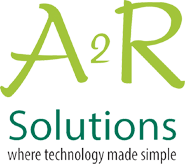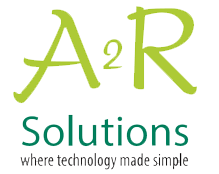What is SaaS? Understanding the Future of Software
Introduction
Welcome to the revolutionary world of Software as a Service, better known as SaaS. In this digital age, businesses are embracing SaaS as a game-changing solution to their software needs. The cloud-based model offers flexibility, accessibility, and cost-effectiveness, transforming the way we approach software applications.
Let’s dive deeper into the realm of SaaS, exploring its defining characteristics, standout features, and how it stands tall against traditional on-premises software. So buckle up as we embark on this enlightening journey into the future of software solutions.
2. What is SaaS?
– Definition of SaaS
SaaS, short for Software as a Service, refers to a cloud computing model where software applications are hosted and provided to users over the internet. Unlike traditional software that requires installation on individual devices, SaaS allows users to access and utilize applications through web browsers from anywhere with an internet connection.
– How SaaS Works
SaaS operates on a multi-tenant architecture, meaning multiple users can access the same software application, and each user’s data is securely separated from others. The service provider handles all the backend tasks, including software updates, maintenance, and data backups, allowing users to focus on their core tasks without worrying about technical aspects.
3. SaaS Characteristics
– Scalability
One of the significant advantages of SaaS is its scalability. Businesses can easily adjust their subscription plans based on their needs, either increasing or decreasing the number of users and features they require. This scalability ensures that companies pay only for the resources they use, making it a cost-effective solution.
– Accessibility
SaaS offers unparalleled accessibility since users can access applications from any device with internet access. This mobility allows teams to collaborate seamlessly from remote locations, boosting productivity and fostering teamwork.
– Automatic Updates
With SaaS, users can say goodbye to the hassle of manual updates. The service provider automatically updates the software, ensuring that all users are consistently using the latest version with the most up-to-date features and security patches.
– Cost-Effective
SaaS significantly reduces upfront costs as there’s no need for expensive hardware or software licenses. Subscribers pay a periodic fee, making it easier for businesses to budget their software expenses.
4. SaaS Features
– Multi-Tenancy
The multi-tenant architecture of SaaS enables multiple users or businesses to share the same application while keeping their data isolated and secure. This shared infrastructure optimizes resource utilization and minimizes operational costs.
– Customization Options
SaaS providers often offer customization options to tailor the software to specific business needs. While maintaining a core set of features, businesses can configure the application according to their workflows and preferences.
– Integration Capabilities
SaaS applications are designed to integrate seamlessly with other software and services. This interoperability allows businesses to streamline their processes and create a unified ecosystem of tools.
– Data Security
Data security is a top priority for SaaS providers. They implement robust security measures, such as encryption, firewalls, and regular security audits, to safeguard user data from unauthorized access or breaches.
5. SaaS vs. On-Premises Software
– Deployment and Installation
SaaS: Users can access the software immediately via the internet without any installation. On-Premises Software: Requires installation on individual devices, which can be time-consuming.
– Cost Comparison
SaaS: Typically follows a subscription-based model, eliminating the need for significant upfront costs. On-Premises Software: Involves higher upfront costs for software licenses and hardware.
– Maintenance and Updates
SaaS: Service providers handle all maintenance and updates, reducing the burden on users. On-Premises Software: Users are responsible for maintaining and updating the software regularly.
– Flexibility and Scalability
SaaS: Offers greater flexibility and scalability with easy adjustments to the subscription plan. On-Premises Software: Scalability might be limited by hardware capacity and upfront costs.
6. SaaS Benefits
– Lower Initial Investment
The subscription-based model of SaaS reduces initial costs, making it an attractive option for businesses with limited budgets or startups.
– Accessibility and Flexibility
The ability to access SaaS applications from anywhere facilitates remote work and enhances team collaboration and flexibility.
– Automatic Updates and Maintenance
SaaS providers handle software updates and maintenance, saving users time and effort.
– Scalability and Growth
SaaS easily scales to accommodate business growth, ensuring that the software can adapt to changing needs.
7. Conclusion
Software as a Service (SaaS) has revolutionized the software industry, offering businesses a more accessible, flexible, and cost-effective way to manage their software needs. With its scalability, easy accessibility, automatic updates, and numerous benefits over traditional on-premises software, SaaS is undoubtedly the future of software solutions.
A2RSolutions is the best accounting software companies in Dubai, specializing in providing top-quality accounting software, including Intuit Quickbooks Online in Dubai. We offer comprehensive online accounting software for small business Dubai, along with sage 300 erp in Dubai. Simplify your business operations with our cutting-edge software tailored for companies in Dubai. We provide sage 50 accounting software Dubai at best pricing.



